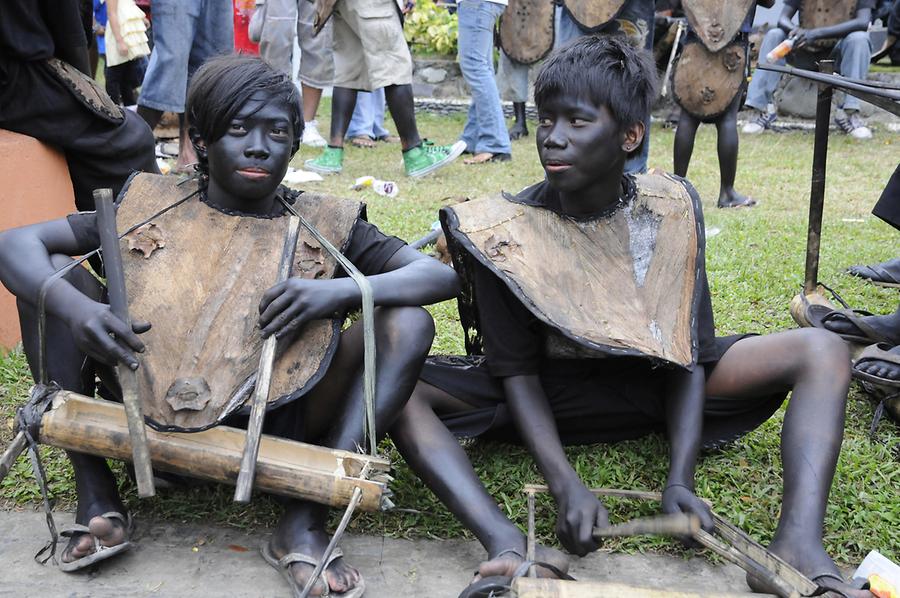Ati Atihan#

Ati Atihan, January 2010, © Gerhard Huber, under CC BY-NC 4.0 +Edu
Filipinos feel the same for Ati Atihan in Kalibo
Kalibo, Philippinen
as the people living in Rio and Venice feel for the carnival there. The cheerful festival has its roots in the 13th century. Ten families had to flee Borneo sailing in a north-easterly direction. They landed at the Philippine Island of Panay where natives ceded them a plot to settle. A festival was celebrated during which the newcomers painted their faces black to look like the people of the local Ati tribe. Later on the Spanish used this ritual to fend off hostile Muslims. They asked the population to dye their skin black, dress martially and act ferocious, simply Ati Atihan which means to be like the Ati.
Was für Rio und Venedig der Karneval, das ist für die Philippinen der Ati Atihan in Kalibo
Kalibo, Philippinen
. Das fröhliche Festival hat seinen Ursprung im 13. Jahrhundert, als zehn Familien aus Borneo flüchten mussten. Sie segelten nach Nordosten und landeten schließlich auf der philippinischen Insel Panay, wo ihnen die Einheimischen ein Stück Land zum Siedeln überließen. Ein Fest wurde gefeiert und die Neuankömmlinge färbten sich die Gesichter schwarz, um so auszusehen wie die hier lebenden Menschen vom Stamm der Ati. Später machten sich die Spanier das Ritual zunutze, um feindliche Moslems abzuwehren. Sie forderten die Bevölkerung auf, sich die Haut zu schwärzen, kriegerisch zu verkleiden und sich wild aufzuführen, eben Ati Atihan, d.h. so zu sein wie die Ati.